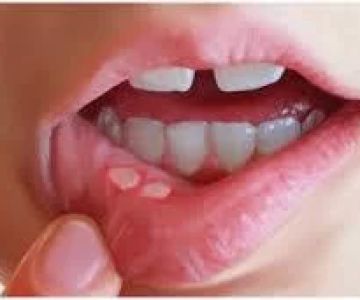How to Identify If an Oral Ulcer is Caused by an Infection or Another Issue
Oral ulcers, though often dismissed as minor nuisances, can be indicative of underlying health issues. Whether it be stress-induced or a sign of an infection, distinguishing the root cause of an oral ulcer is essential for effective treatment. In the United States, oral health ranks as a top concern for many individuals who often seek timely and specialized care. Our website, Dentistry Toothtruth, is dedicated to providing accurate information to help you discern the nature of your oral health issues. Understanding the characteristics of oral ulcers can prevent unnecessary distress and guide you towards appropriate interventions.
Understanding the Nature of Oral Ulcers
The first step in identifying whether an oral ulcer is infection-based or caused by another factor is to understand its nature. Oral ulcers generally appear as small, white, or yellowish sores within the mouth and can cause discomfort or pain. These ulcers may result from a myriad of causes such as trauma from dental appliances, nutritional deficiencies, and, notably, infections. Herpetic ulcers, for instance, are caused by the herpes simplex virus and manifest with specific, recurring episodes. On the contrary, ulcers resulting from mechanical trauma, like accidental cheek biting, typically manifest as isolated incidents. By closely observing the symptoms and frequency of occurrence, you can begin to distinguish between infection-induced ulcers and those caused by other factors.
Signs That Signal an Infectious Cause
Recognizing signs that point towards an infectious origin is pivotal in oral ulcer assessment, particularly for US readers who value preventive care. Infectious ulcers often exhibit specific patterns and accompanying symptoms. They may appear red and inflamed at the base, with a propensity to spread or recur more frequently. Accompanying symptoms such as fever, swollen lymph nodes, and fatigue are additional indicators of an infectious cause. Viral infections, like those caused by the Coxsackie virus, lead to conditions such as herpangina, displaying notable symptoms alongside oral ulcers. Conversely, bacterial infections could present with pus formation, particularly in ulcers caused by bacterial invasion. Understanding these signs can not only guide self-assessment but also inform discussions during dental consultations.
Exploring Non-Infectious Causes of Oral Ulcers
While infections are a significant factor, non-infectious causes also account for a substantial number of oral ulcers. Many individuals in the US encounter ulcers from internal factors such as stress, hormonal changes, or systemic conditions like autoimmune disorders. Stress ulcers are particularly common, often surfacing during periods of emotional upheaval or fatigue. Nutritional deficiencies, especially in vitamins B12, iron, and folate, are notorious for causing oral ulceration. A classic example involves the onset of canker sores, which are non-contagious but can be aggravated by stress or dietary triggers. Appreciating these non-infectious origins can empower you to make lifestyle adjustments that could mitigate incidence and severity.
When to Seek Professional Evaluation
Determining when an oral ulcer warrants professional evaluation is crucial, especially given the vast expertise available across the US. Persistent ulcers that do not heal within two weeks, those that occur with alarming frequency, or are accompanied by significant pain warrant an oral health professional's expertise. More so, if ulcers disrupt daily functions such as eating or speaking, seeking timely care can provide relief and prevent complications. Contacting your dentist or healthcare provider should be an immediate step taken when there's suspicion of an underlying systemic or infectious cause. Professional evaluations involve a comprehensive assessment of medical history, dietary habits, and possibly, diagnostic tests to confirm the source of the ulcer.
Conclusion and Recommendations
Identifying the cause of an oral ulcer is integral to addressing its origin and formulating an effective treatment plan. As explored, understanding the characteristics and accompanying symptoms of oral ulcers can guide US readers in self-assessment and decision-making. Whether caused by infection or another issue, being informed empowers you with the tools to pursue appropriate care. We encourage visits to our homepage, Dentistry Toothtruth, for up-to-date information and resources on maintaining optimal oral health. Should concerns about oral ulcers arise, prompt action and consultation with a dental professional are proactive steps to ensure continued oral well-being.




 Dr. Janelle Holden, DDS4.0 (5 review)
Dr. Janelle Holden, DDS4.0 (5 review) Maine Prosthodontics5.0 (168 review)
Maine Prosthodontics5.0 (168 review) Community Health Center of Snohomish County - Everett-North Clinic4.0 (960 review)
Community Health Center of Snohomish County - Everett-North Clinic4.0 (960 review) Dr. Hamish Carpenter, DDS5.0 (3 review)
Dr. Hamish Carpenter, DDS5.0 (3 review) Smile Doctors Orthodontics - Canton4.0 (181 review)
Smile Doctors Orthodontics - Canton4.0 (181 review) Isom Endodontics- Dr. Terry Isom4.0 (322 review)
Isom Endodontics- Dr. Terry Isom4.0 (322 review) The Importance of Oral Health Education During Pregnancy for a Healthy Pregnancy
The Importance of Oral Health Education During Pregnancy for a Healthy Pregnancy Best Tips for Brushing Your Teeth Properly for Healthy Gums: Essential Techniques for Oral Health
Best Tips for Brushing Your Teeth Properly for Healthy Gums: Essential Techniques for Oral Health Why Skipping Dental Checkups Can Lead to Bigger Oral Health Problems
Why Skipping Dental Checkups Can Lead to Bigger Oral Health Problems Advantages of Porcelain Dental Restorations
Advantages of Porcelain Dental Restorations How Can Diabetes Cause Tooth and Gum Problems? Preventing and Managing Oral Health Issues
How Can Diabetes Cause Tooth and Gum Problems? Preventing and Managing Oral Health Issues Healthy Habits for Promoting Good Oral Health and Hygiene: Tips for a Healthy Smile
Healthy Habits for Promoting Good Oral Health and Hygiene: Tips for a Healthy Smile